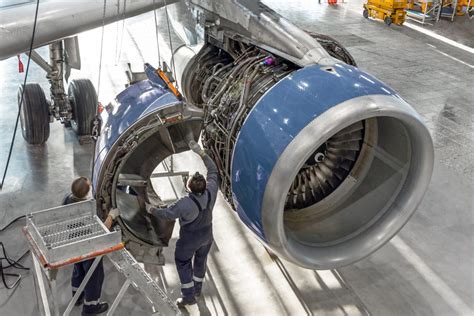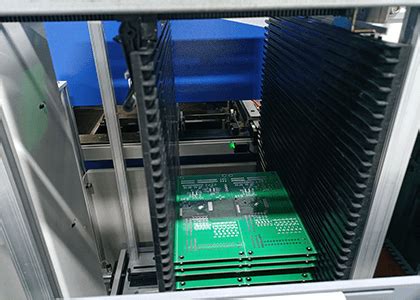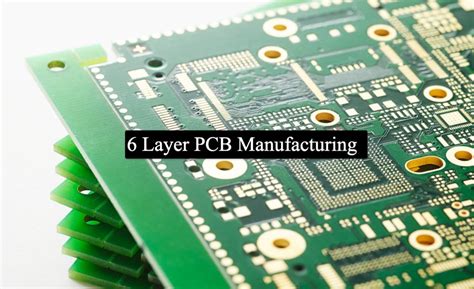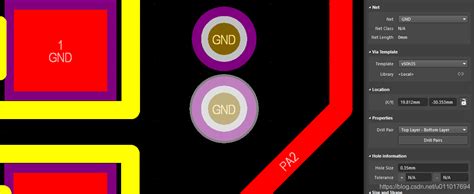Advancing Aerospace: The Future of PCB Assembly Innovations
Key Takeaways
The advancements in pcb assembly techniques and technologies are reshaping the landscape of the aerospace industry. As the demand for more reliable and efficient components continues to grow, innovative practices in pcb assembly are becoming critical. Technologies such as surface mount technology (SMT) and advanced soldering methods are streamlining production processes, ensuring that manufacturers can keep pace with the rapid evolution of aerospace requirements. Furthermore, the integration of advanced materials in pcba not only enhances component durability but also supports weight reduction, which is a vital factor in aerospace design. The focus on optimizing performance through rigorous testing protocols and innovative design methodologies is setting new standards for quality assurance in aerospace applications. Ultimately, these innovations serve not only to meet regulatory requirements but also to push the boundaries of what is achievable within the industry, ensuring that advancements in pcb assembly will play a pivotal role in the future of aerospace technology.
Introduction to Aerospace PCB Assembly Innovations
Aerospace PCB assembly (commonly abbreviated as PCBA) is undergoing transformative changes, fundamentally reshaping how the industry approaches electronic system integration. As the demand for higher performance and greater reliability intensifies, innovations in pcba techniques have emerged as critical solutions. The need for lightweight components that do not compromise on strength and durability is driving advancements in materials specifically designed for aerospace applications. Moreover, modern manufacturing processes are adopting automation and precision engineering to enhance consistency and reduce production time, crucial elements in the fast-paced aerospace sector. Techniques such as surface-mount technology (SMT) and 3D printing are enabling designers to push the boundaries of what is possible in PCB assembly, optimizing both layout complexity and functionality. The integration of advanced testing methods further ensures that every assembly meets stringent safety standards while enhancing overall system performance. As these innovations continue to evolve, they create new opportunities for reducing costs while fostering breakthroughs that can lead to more capable aircraft, satellites, and space vehicles. In this dynamic landscape, staying abreast of these developments is essential for industry stakeholders aiming for excellence in aerospace PCB assembly solutions.
Key Technologies Driving PCB Assembly in Aerospace
The aerospace sector is witnessing a transformation driven by various key technologies that enhance the efficacy of PCB assembly (PCBA) processes. Among these innovations, automated optical inspection (AOI) systems stand out, ensuring precision in the detection of defects on printed circuit boards. The integration of machine learning algorithms into these systems allows for real-time analysis and feedback, drastically reducing error rates during production. Furthermore, the use of advanced soldering techniques, such as surface mount technology (SMT), increases component density, making it possible to design lighter and more efficient boards crucial for aerospace applications.
Another pivotal technology is the development of high-frequency materials that cater to the specific needs of aerospace communication systems. These materials not only support higher frequencies but also improve signal integrity, which is vital for safety and performance. Moreover, flexible PCBs are becoming increasingly popular due to their ability to fit into non-flat surfaces, allowing for more innovative designs and integration within compact constraints in aircraft designs.
| Technology | Impact on PCBA |
|---|---|
| Automated Optical Inspection | Reduces defect rates |
| Machine Learning Algorithms | Enhances production efficiency |
| High-frequency Materials | Improves signal integrity |
| Flexible PCBs | Enables innovative designs |
“The future of aerospace lies in embracing advanced technologies that enhance the capability and integrity of PCB assembly.”
Ultimately, these technological advancements not only promise improved efficiency but also set a new standard for reliability in aerospace applications, guiding companies toward safer and more innovative flight solutions while addressing escalating demands for performance in an ever-evolving industry landscape.
Enhancing Efficiency: Streamlining PCB Production Processes
In the pursuit of excellence within the aerospace sector, achieving higher efficiency in PCB assembly processes is crucial. The adoption of lean manufacturing principles combined with state-of-the-art automation technologies has enabled manufacturers to significantly reduce production times while maintaining high standards of quality. Innovative techniques such as surface mount technology (SMT) and robotic assembly can allow for precise placements of components on PCBA, thus minimizing errors and enhancing overall productivity. Furthermore, real-time monitoring systems are increasingly integrated into the pcb assembly process, allowing for immediate feedback and adjustments, which significantly decrease downtime. This focus on efficiency not only leads to cost reductions but also supports the aerospace industry’s commitment to reliability and performance, essential factors for meeting stringent regulatory standards. As these production processes continually evolve through technological advancements, they not only enhance operational efficiency but also pave the way for more sustainable practices within the aerospace realm, ultimately contributing to a more robust and innovative sector.
Reliability in Aerospace: The Role of Advanced Materials
In the realm of aerospace PCB assembly, the demand for reliability is paramount. The integration of advanced materials is transforming how printed circuit board assembly (PCBA) is approached in the aerospace sector. These materials are engineered to withstand extreme conditions, including high altitudes, temperature fluctuations, and mechanical stresses, thereby ensuring the longevity and functionality of critical systems. For instance, ceramic-filled polymers and high-frequency laminates are at the forefront of material advancements, displaying enhanced thermal stability and dielectric properties. This not only contributes to improved performance but also reduces risk factors in mission-critical applications. The use of these innovative materials corresponds directly with advancements in manufacturing techniques that facilitate more precise and efficient pcb assembly processes. Consequently, embracing these materials enhances the overall reliability of aerospace components, ultimately supporting the industry’s commitment to safety and durability in ever-evolving technological landscapes.
Performance Optimization: Innovations in Design and Testing
In the quest for superior pcb assembly processes, the aerospace industry is witnessing groundbreaking innovations that focus on performance optimization. Effective design and rigorous testing are critical elements that enhance the overall performance of PCBA (Printed Circuit Board Assembly) used in aerospace applications. One notable advancement is the integration of simulation technologies, enabling engineers to predict and measure how a board will perform under various operational conditions. This proactive approach reduces the likelihood of failures, ensuring that pcba solutions meet stringent safety and reliability standards essential for aerospace operations.
Additionally, advancements in materials used during the pcb assembly process are leading to significant improvements in thermal management. Materials with superior thermal conductivity can dissipate heat more effectively, which is crucial for high-performance electronic systems where heat accumulation could lead to failures. Furthermore, innovative testing methodologies, such as automated optical inspection (AOI) and X-ray analysis, allow manufacturers to detect defects early in the production cycle, thus enhancing efficiency and minimizing waste.
The continuous evolution of design tools and software also plays a pivotal role in optimizing performance. These tools facilitate rapid prototyping and iterative testing, allowing engineers to refine their designs quickly before moving to full-scale production. By leveraging these innovations, aerospace manufacturers can achieve not only operational excellence but also meet increasingly complex demands for reliability and performance in an industry characterized by rapid technological advancements. In summary, the strategic focus on performance optimization through innovative design methodologies and rigorous testing protocols is reshaping how pcb assembly is approached within the aerospace sector, leading to safer and more reliable aircraft systems.
Future Trends in Aerospace PCB Assembly: What to Expect
As the aerospace industry continues to evolve, so too does the landscape of PCB assembly (PCBA). One of the primary trends shaping the future is the increased incorporation of advanced automation technologies, which aim to increase production efficiency and minimize human error. These innovations in automation not only streamline PCB production processes but also allow for a higher degree of precision in assembling complex components, which are critical for aerospace applications.
Furthermore, sustainability is becoming a focal point in future pcb assembly methods. As environmental regulations tighten and demand for eco-friendly practices rises, companies are investing in materials and processes that reduce waste and energy consumption. This encompasses everything from selecting advanced materials that are lighter yet stronger to employing techniques that minimize resource usage throughout manufacturing cycles.
Moreover, there is an ongoing shift towards smart manufacturing solutions. These solutions leverage IoT (Internet of Things) technologies to monitor production processes in real-time, allowing for immediate feedback and adjustments. This not only enhances reliability but also contributes significantly to performance optimization by ensuring consistent quality throughout the entire lifecycle of a PCBA.
In addition to these technological advancements, collaborative efforts among manufacturers, suppliers, and regulatory bodies are accelerating innovation timelines. This cooperation is essential for addressing the stringent requirements within aerospace applications while focusing on enhancements that support overall system performance and safety.
As we look forward to the coming years, it becomes clear that innovations in aerospace PCB assembly, driven by automation, sustainability, smart technologies, and collaborative efforts will redefine productivity metrics and set new benchmarks for performance within this vital sector. The focus on these core areas will not only enhance current methodologies but also pave the way for groundbreaking advancements in aerospace design and functionality.
Case Studies: Successful Implementations of Innovative Techniques
In the realm of aerospace PCB assembly, numerous case studies illustrate the profound impact of innovative techniques on the industry’s operational efficiency and reliability. One notable example is the application of advanced automation systems in PCBA processes, which significantly reduce production time while maintaining high precision. This shift towards automation not only streamlines workflows but also enhances consistency in manufacturing, which is crucial for aerospace applications where every component must adhere to stringent safety standards. Another case highlights the use of advanced materials in circuit boards, such as high-frequency laminates that improve signal integrity and thermal performance. This innovation directly contributes to the performance optimization of avionics systems, leading to more reliable flight operations. Furthermore, companies adopting smart technologies like predictive maintenance have demonstrated a noticeable reduction in downtime and operational risks associated with traditional pcb assembly methods. By integrating data analytics into their production line, these organizations can anticipate potential failures before they occur, ensuring a proactive approach to maintenance and repair. Such successful implementations underline the importance of embracing creativity and forward-thinking solutions in PCB assembly, challenging existing paradigms and paving the way for enhanced performance in the constantly evolving aerospace landscape.
Conclusion: The Impact of PCB Assembly Innovations on the Aerospace Industry
The advancements in pcb assembly techniques have reshaped the landscape of the aerospace industry, creating a ripple effect that redefining how components are manufactured and integrated into complex systems. Innovations within pcba processes improve not only the efficiency of production but also significantly increase the reliability and performance of aerospace applications. With a focus on advanced materials and design technologies, manufacturers can produce lighter yet stronger circuit boards that withstand the harsh conditions of aerospace environments. The continuous evolution in this field supports cost reduction and quicker turnaround times, allowing companies to adapt to changing market demands more effectively. Furthermore, these innovations can lead to decreased maintenance needs and an extended lifecycle of aerospace components, providing a considerable advantage in an industry where safety is paramount. As manufacturers capitalize on cutting-edge technologies, we can expect further enhancements that will drive unprecedented levels of efficiency and performance in future aerospace missions.
Conclusion: The Impact of PCB Assembly Innovations on the Aerospace Industry
The landscape of aerospace PCB assembly is rapidly evolving, driven by a need for more efficient and reliable systems in the air and space. Innovations in PCB assembly techniques are not merely enhancements; they represent a fundamental shift towards smarter, more integrated manufacturing solutions. As we have seen, the incorporation of advanced materials and optimized designs can significantly improve the durability and performance of PCBA components, crucial for the demanding conditions they face. Moreover, new technologies such as automation and machine learning are streamlining production processes, ensuring consistency and reducing lead times. These advancements not only foster enhanced performance but also promise increased safety through rigorous testing protocols. In conclusion, as the aerospace sector continues to embrace these PCBA innovations, it sets a foundation for future developments that will address complex challenges in design and functionality. This proactive approach will undoubtedly lead to breakthroughs that expand our capabilities in aerospace exploration and technology.
FAQs
What is aerospace PCB assembly?
Aerospace PCB assembly, often referred to as PCBA, involves the integration of electronic components onto printed circuit boards specifically designed for use in aerospace applications. This process ensures that the boards meet the rigorous standards necessary for reliability and performance in aviation environments.
What are the key technologies driving innovations in aerospace PCB assembly?
Key technologies include advanced materials, automated production techniques, and design software that enhance the precision and efficiency of pcb assembly. Innovations such as additive manufacturing and surface mount technology are particularly influential, contributing to lighter, more compact designs.
How can efficiency be improved in PCB production processes for aerospace applications?
Streamlining pcb assembly processes can be achieved through automation and integrated manufacturing systems. By reducing manual intervention and enhancing workflow coordination, manufacturers can significantly cut down on production time while maintaining high quality.
What role do advanced materials play in ensuring reliability?
Advanced materials enhance durability and performance under extreme conditions. This includes using specialized laminates that resist heat and moisture, ensuring that PCBA can function optimally without failure throughout its lifecycle.
How are design and testing processes optimized for better performance?
Innovations such as simulation software allow designers to test circuits virtually before physical production. Techniques like Design for Manufacturability (DFM) help identify potential issues early on, thus improving overall performance by ensuring that designs are both functional and easy to produce.







